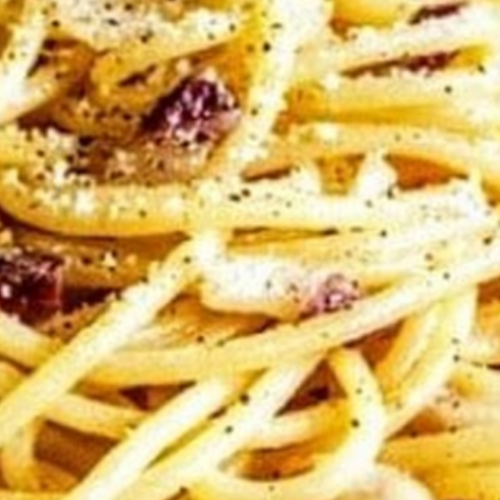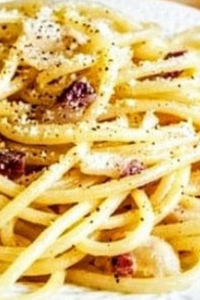Method:
Cook the Guanciale: Heat olive oil in a frying pan over medium heat. Add the guanciale strips and cook, stirring occasionally, until golden and crispy, about 5-7 minutes. The rendered fat will create the base of your sauce.
Boil the Pasta: While the guanciale is cooking, bring a large pot of salted water to a boil. Cook the pasta according to the package instructions until al dente. Reserve 1 cup of pasta water before draining.
Create the Sauce: Once the guanciale is crispy, add about 1/3 cup of the reserved pasta water to the pan. Stir well to combine the water with the rendered fat, forming a sauce. Adjust the heat to low.
Combine Pasta and Sauce: Add the drained pasta to the skillet with the guanciale. Toss well to coat the pasta in the sauce. If the sauce is too thick, add more reserved pasta water to thin it out.
Add Cheese and Pepper: Remove the skillet from the heat, then stir in half of the grated Pecorino Romano and freshly ground black pepper. Mix until smooth and creamy. Add more cheese if desired.
Serve: Plate the pasta and top with the remaining Pecorino and another sprinkle of black pepper. Serve immediately.
Variations and Tips:
Substitutions: If you can't find guanciale, pancetta or high-quality bacon can be a good substitute, though the flavor won't be quite the same.
Cheese Alternatives: While Pecorino Romano is traditional, Parmigiano Reggiano can work as a substitute, providing a milder flavor.
Dietary Adjustments: For a dairy-free version, consider using a plant-based cheese, although the taste will differ.

